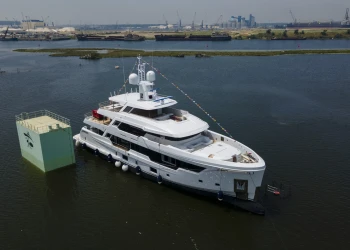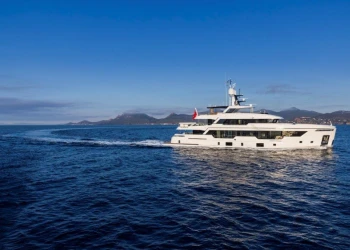
Rosetti Superyachts unveils the revolutionary Remote Control Navigation system
Rosetti Superyachts: revolutionary Remote Control Navigation system
Rosetti Superyachts is ahead of the curve. Thanks to the Rosetti Marino Group’s proven experience in the field of shipbuilding, technological innovation and cutting-edge navigation solutions, we are working with the Group’s R&D department to transfer avant-garde Remote Control technology from the commercial sector and adapt it for use in yachting. Rosetti Superyachts is at the forefront of a technological innovation that provides a competitive advantage that no other yacht builder in the world can offer.
In the autonomous revolution that is underway, nearly every transportation vehicle will eventually be self-driving. For cars, it is likely to take years before we see them operating freely outside of test conditions on our roads. But some commercial unmanned vessels may be at sea before the end of the decade and the logical conclusion is that superyachts will follow.
The revolutionary Remote Control System is based on a M2M connection (machine-to-machine) system installed aboard Giano Tug guaranteed by two Internet encrypted tunnels that ensure Cyber Security with a direct connection between the ship and Remote Bridge, without needing to go through third party servers. It is thus possible to remotely manage Giano wherever it is, controlling the video system, the navigation, propulsion and engine room equipment.
The Giano Tug, a Lloyds Register-certified tugboat, was presented during the 2018 “ITS Tugnology” convention in Marseille from 25 to 29 June, when Captain Carsten Nygaard was able to control the tug from the stand using the remote console.
Using the same logic and remote console, which replicate the controls found on the bridge, a yacht could be manoeuvred without geographical limits by a senior officer located in a land-based office. The commands are relayed to dry land by the captain on board the vessel. A route can then be entered and the yacht ‘delivered’ to its final destination and progress is monitored via a video system and night-vision cameras, assuring double control during navigation to avoid collisions.
Much of the technology for autonomous vessels is already in place, but regulation needs to be properly updated. Autonomous ships are an area of special interest to the International Maritime Organisation (IMO), which sets the standards for national and international waters. Last year, the IMO launched a regulatory scoping exercise to analyse the impact of self-driving vessels.
The extent of regulatory change will depend on the level of autonomy permitted, and Lloyd’s Register, for example, has already published classification guidance for six autonomy levels. Maritime law is one of the oldest legal systems in the world that has successfully adapted from sail to steam and beyond – no doubt the same will hold true for autonomous remote-controlled vessels in the near future.





